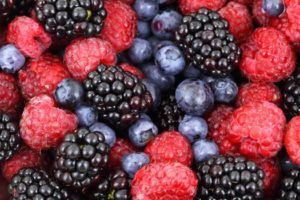Consider the simple pimple, sunburn or mosquito bite. Minor events such as these produce inflammation. So do larger events like a sprained or broken ankle. Experts now believe chronic inflammation in the body may be linked to various forms of cancer as well as other major diseases such as rheumatoid arthritis, diabetes, and heart conditions.
What is inflammation?
Inflammation is your immune system’s natural response to an injury, like a pulled muscle, or to germs, allergens, a chemical irritant, and other threats. Your immune system reacts by releasing white blood cells and chemicals into the bloodstream that infiltrate your tissues, causing those indicators of inflammation most of us are familiar with: redness, heat, swelling, and pain.
These symptoms are created by the activity of immune cells working to break down injured and dying tissues so that new, healthy ones can replace them. This is a normal and healthy response – our bodies need to remain ready to repel an invasion or severe injury with aggressive pro-inflammatory responses such as clotting, fever, or swelling. Too often, however, inflammation becomes a chronic condition, and, in this state, we leave ourselves more vulnerable to cancer occurrence and recurrence.
Factors that influence inflammation
A number of lifestyle factors play a role in contributing to chronic inflammation. Diet is one of its most important modulators, with foods having either “pro-inflammatory” or anti-inflammatory” properties. Not surprisingly, packaged foods that are processed with a high sugar content, as well as trans fats, are among the most potent of pro-inflammatory foods. And the type of fat you eat just might play the biggest role of all in determining levels of systemic inflammation.
Oxidative stress
Your body constantly interacts with oxygen as you breathe and your cells produce energy. Free radicals are unstable, highly reactive molecules that lose an electron as a result of this activity. Since electrons come in pairs, when molecules lose an electron they “steal” electrons from other molecules. These molecules then “steal” electrons from other molecules, starting a dangerous chain reaction called free radical damage. In large amounts free radicals damage cells indiscriminately.
If you’re body isn’t able to stop the free radical chain reaction, oxidative stress follows, causing damage to cells, cell membranes, tissues and organs.. In an attempt to repair such damages, the body calls for an immune response which in turn initiates inflammation. Chronic inflammation can itself lead to free-radical generation. Therefore, one way to keep inflammation and oxidative stress under control is to eat a diet rich in antioxidants. 8-12 vegetable servings a day, with the occasional fruit, should do the trick.
Weight and Blood Sugar
Keeping your weight in check is crucial for preventing inflammation, as well as conditions associated with it and obesity, such as heart disease and diabetes. Research indicates that visceral fat (the fat located deep in the abdominal area) is more metabolically active than other types of fat, secreting large amounts of inflammatory cytokines. The good news? Maintaining a healthy weight greatly reduces and in some cases even eliminates inflammation.
The hormone insulin itself is an inflammatory agent. So, the lower you can keep your fasting glucose and insulin levels, the less you will have to worry about them as a source of unwanted inflammation.
Stress and Sleep Deprivation
Both stress and sleep deprivation can lead to inflammation through the elevation of the hormone cortisol. (Eliaz. 2009) Chronic stress, Dr. Eliaz explains, leads to the overproduction of cortisol, the body’s most abundant stress hormone. This rise disrupts normal hormonal function, raising blood sugar levels and contributing to the inflammatory cascade.
Excessive exercise
Everyone feels better with regular exercise. It can improve physical fitness, enhance overall well-being, and may also strengthen the immune system. It’s tempting to be impatient and ignore our bodies’ protests, when we are trying to reach a physical goal. But, be careful! When combined with inadequate rest and other stresses, over exercise, sometimes called over-training syndrome, can lead to an impaired immune system and inflammation. When sufficient rest is allowed, pro-inflammatory cytokines can facilitate the healing process. That’s why we often feel better resting after a long bike ride. And why it’s best to alternate periods of exercise with periods of healing, recuperative rest.
Assessing Your Status
Other than some obvious signs―puffy gums, sore joints, chronic stuffiness―how can you tell if your inflammation levels are higher than they should be? Several tests can be useful here.
C-Reactive Protein
C-Reactive Protein is a simple blood test that measures levels of C-reactive protein (CRP), a powerful inflammatory marker. If the results are elevated, above 1.0, then it’s time to take action to bring levels down. You might want to keep running that test on a three-month interval. If you don’t have cancer but have risk factors, you may want to run the test on an annual basis as part of your regular physical exam.
Fibrinogen
An important contributor to blood clotting, fibrinogen levels rise in reaction to inflammation. For this reason, if inflammation levels are high, it may be wise to check fibrinogen levels as well. The Life Extension Foundation (www.lef.org) advises that optimal fibrinogen levels should range between 215 and 300 milligrams per deciliter (mg/dL) of blood. Bringing levels into normal range has the added benefit of keeping the blood flowing more smoothly, making it more difficult for metastases to develop.
Food sensitivity panel
If your inflammatory markers remain stubbornly high, consider the possibility of food allergies or sensitivities. Common allergens like casein (from dairy) and gluten (from wheat) are known to spark an inflammatory cascade in sensitive individuals. Keep in mind that as we age, foods that may not have bothered us before, like dairy and wheat, may trigger chronic low-grade inflammation. Even seemingly innocuous foods, when eaten repeatedly, can cause a food sensitivity to develop. If you think you might have a food sensitivity, we recommend going on an elimination diet for two weeks to see how you feel.
How to Lower your inflammation levels
- Change your oil
The type of fat that you eat is possibly the most important dietary factor affecting the level of inflammation in your body. There is a world of difference between healthy fats and unhealthy fats.
Fats stimulate a variety of chain reactions in your body. Picture a run of dominoes. When you push on the first one in line, the rest topple. Inserting unstable or unhealthy fats into the system will eventually cause the system to collapse in the same way.
When you consider that every cell in your body is surrounded by a lipid (fat) layer that is just the right constituency to let all necessary nutrients in while allowing all the critical waste material to pass out, you can see that altering the composition of that cell membrane is risky business. Yet, that’s exactly what unhealthy fats do. They will “gunk up” your cell membranes and, what’s more, they initiate a domino effect that ends with a host of pro-inflammatory ecosinoids (molecules composed of fatty acids) running rampant.
Trans fats are among the worst offenders (Mozaffarian, et al. 2004) Although they exist nowhere in nature, they line supermarket shelves in large quantities in the form of snack foods, fried foods, baked goods, and vegetable shortening. Trans fats also create free radicals that damage healthy cells and trigger inflammation. Hundreds of studies like the one above have now confirmed the link between trans fats and inflammation.
- Essential fatty acids
EFAs, or essential fatty acids, are fats that the body can’t live without, and must get from food sources. Omega-6 fatty acids start the fire of inflammation and omega-3 fatty acids put it out. Whereas our ancestors are believed to have eaten about twice as much Omega 6 fat as Omega 3 fat, many experts believe we now eat 10 to 30 times more Omega 6 fats than Omega 3 fats. The result is an unbalanced inflammation response.
An ideal balance of Omega 6 to Omega 3 fats would help keep inflammation under control. Omega 3 fats act as natural anti-inflammatory drugs without the side effects. Incorporate more Omega 3 fats into your diet by adding wild salmon, halibut, sardines and occasional tuna; and by eating lots of flax seeds, chia seeds and walnuts. Salmon is a particularly rich source of EPA and DHA, the two potent omega-3 fatty acids that douse inflammation. Add a fish oil supplement to your regimen. These are helpful in avoiding cancer.
Remember to keep your oils tightly covered in a colored glass bottle Exposure to air, light and heat oxidizes oils, rendering them rancid, and rancid oils are known to cause inflammation.
What about olive oil?
Olive oil belongs to a family of fatty acids called the Omega 9s, which provides great anti-inflammatory value. For this and all of its other wonderful health benefits, we highly recommend the regular consumption of extra virgin olive oil. Like other precious oils, be sure to store in a dark container.
- Lower your glycemic load
Refined sugar and other foods with high glycemic values elevate insulin levels and put the immune system on high alert. High insulin levels stimulate the release of pro-inflammatory compounds. A 2005 study from the Harvard School of Public Health found that women who ate high-fiber diets rich in fruits, vegetables, and whole grains had lower levels of C-reactive protein than women whose diets consisted of primarily refined grains. (Esmaillzadeh, et al. 2006)
Yet another reason to avoid sugar and refined flour products.
- Flood yourselves with antioxidants
As we discussed earlier in the chapter, free radical damage is an unavoidable side effect of being alive. But, you can mount a strong defence against the oxidative stress and inflammation caused by free radicals by keeping your antioxidant intake high. By eating a diet rich in vegetables and fruits, you’ll boost your antioxidant capacity in these ways:
- You’ll support the main antioxidant enzymes that the body produces internally – glutathione, superoxide dismutase and catalase .
- You’ll get plenty of antioxidant vitamins, minerals, and phytonutrients (Vitamin A, C, E, selenium, carotenoids, bioflavonoids) from the colorful fruits and vegetables, whole grains, nuts and seeds you eat.
Resveratrol is a powerful antioxidant, appears most prominently in the skins of red grapes. Scientists have noted that it exerts a variety of anti-cancer effects. Bill Sardi, resveratrol expert and author of You Don’t Have to Be Afraid of Cancer Anymore, recommends 30-50 mg. as a preventative dose, and 300 mg. or higher for those with an active tumor.
- Don’t forget these key nutrients
Magnesium
Magnesium is good for so many things and inflammation is no exception. Remember your food sources of magnesium: nuts, beans, artichokes and most green leafy vegetables.
Vitamin D
Vitamin D can not only enhance immunity and cell differentiation, it can also help activate the p53 tumor suppressor gene.
It is critical to include Vitamin K2 along with Vitamin D to avoid hypercalcemia and potential arterial calcification.
- Monitor food allergies and sensitivities
Any time you eat a food that your body has an allergy or sensitivity to, your body views the food as a foreign invader and mounts an immune/inflammatory response. To identify and treat the allergy, an Elimination Diet removes the most highly allergenic foods from the diet. Sensitivity issues can include bloating, diarrhea, constipation, itching, mental fogginess, and cravings for that particular food. The foods typically removed from the diet are dairy, eggs, gluten (wheat, barley, rye, and spelt), soy, corn, red meat, peanuts, nuts, citrus, and shellfish. These foods are avoided for approximately 21 days. At the end of the 21 day period foods are added back in, one at a time, every 3-5 days while noting the potential return of any symptoms.
- Spice up your life
Widely used in Eastern cuisine to flavor most foods and used in Ayurvedic medicine for centuries, scientists now recognize its powerful antioxidant and anti-inflammatory active ingredient: curcumin. Research in the last 50 years has repeatedly shown curcumin’s ability to suppress the COX-2 and LOX enzymes and to inhibit metastasis, or tumor spread. (Aggarwal, et al. 2006) (Bachmeier, et al. 2008)
In a mouse study of breast cancer, 68% of the mice that received curcumin showed no or very few lung metastases,. The animals that did not receive curcumin were not so fortunate. 83% showed extensive metastases. (Bachmeier, et al. 2007)
Curcumin has shown such power as an anti-inflammatory, anti-metastatic, and apoptosis-inducing agent, that it’s been the subject of several clinical trials at M.D. Anderson Cancer Center. Not bad for a kitchen spice!
Curcumin is found in turmeric – haldi. So is it enough to add haldi to your food? Sadly, no. Pure turmeric powder has a curcumin concentration, averaging 3.14% by weight.
Boswellia and Ginger are powerful natural anti-inflammatory food ingredients.
- Exercise
Exercise does more than help you maintain a healthy weight. While activity throughout a person’s lifetime is important, activity at any age can help lower cancer risk. A 2002 study from the Emory School of Medicine found that people ages 40 and older who exercised four to 21 times a month experienced decreased or lower levels of C-reactive protein. (Abramson and Vaccarino. 2002)
- Bringing down elevated fibrinogen
Omega 3 oils found in flax and chia seeds, walnuts, salmon, anchovy and halibut, will not only help to lower elevated cr-p levels, they exert a mildly thinning effect on the blood, bringing down elevated fibrinogen levels. Since “thicker” blood helps cancer to proliferate, some former cancer patients use nattokinase, an enzyme extracted from a fermented Asian soy dish called natto, to keep fibrinogen levels at a moderate level. Garlic, Vitamin C and the enzyme bromelain are also helpful in this regard.
TO DO LIST
- Monitor your levels of inflammation by asking your doctor to check your blood levels of c-reactive protein and fibrinogen. Thermography is also available in some communities to examine inflammation patterns in the breasts.
- Change your oil to keep inflammation levels under control. Choose monounsaturated oils such as olive oil (extra virgin) for cold or low heat use and coconut oil for higher heat use. Avoid Omega 6 “supermarket” oils, especially the “big four” genetically modified ones: corn, soy, canola and cottonseed. Eat wild fatty fish, flax or chia seeds, and/or take a fish oil supplement regularly.
- Keep glucose and insulin levels under control, as they are both highly inflammatory.
- Be alert for food allergies and sensitivities as a cause of systemic inflammation, and test for these, if suspicious.
- Use culinary herbs and spices liberally in your cooking, as virtually all herbs and spices have anti-inflammatory effects, particularly turmeric, ginger and boswellia.
- Get sufficient rest and exercise in moderation.
- Have a nice day!
From Helayne Waldman This work is reproduced and distributed with the permission of GreenMedInfo LLC. Want to learn more from GreenMedInfo? Sign up for the newsletter here http://www.greenmedinfo.com/greenmed/newsletter.”



